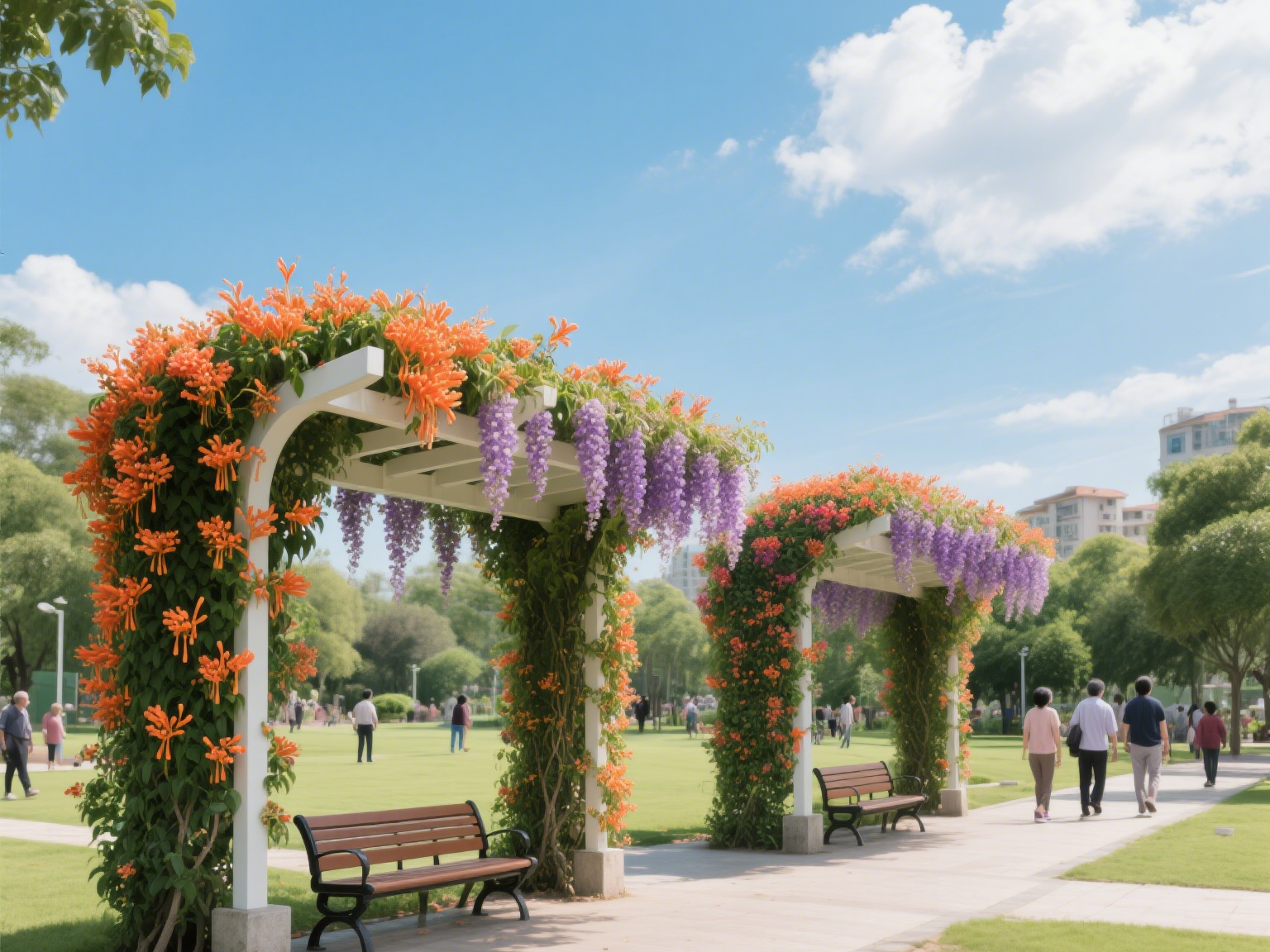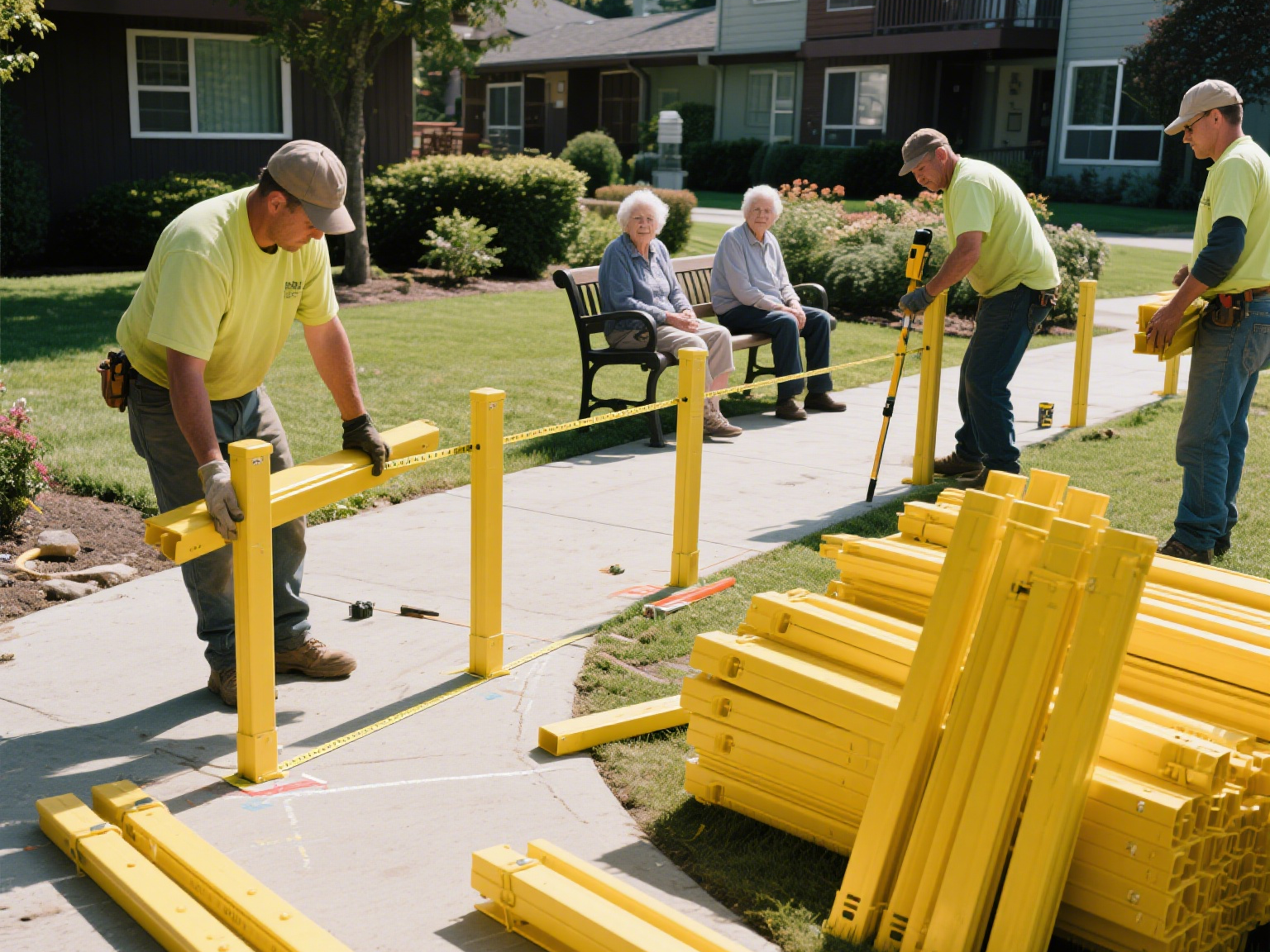At the end of Maple Avenue in Vancouver’s Oakridge neighborhood lies the “Sunset Oaks” senior community, a ten-acre haven for 327 seniors with an average age of 78. For years, they were fenced in by a cold, unwelcoming barrier—a 1990s-era iron fence with rusted spear tops, icy handrails in winter, and solid 1.2m panels that blocked wheelchair users from enjoying the garden views. “To see the cherry blossoms, my caregiver has to tilt my wheelchair just to peek over,” sighed 85-year-old veteran John.

The turning point came on a stormy night. Community manager Emily studied the accident reports—47 senior injuries from fence-related slips or collisions in the past year alone. When she Googled “senior community safety fencing,” a photo from a Chinese old community caught her eye: elders sitting beside low wooden fences, fingers brushing vines, sunlight filtering through latticed rails. It led her to our company’s PVC fencing webpage, where she saw bright yellow rounded PVC fences lining a path, with non-slip textures on the posts and magnifying glass signs for identifying lavender. At 2 a.m., she left a message: “We need fencing that breathes, not barriers. Connection, not isolation.” Five minutes later, she received a detailed Aging-In-Place Fencing Questionnaire—asking about winter temperatures, wheelchair sightlines, and more—confirming she’d found a team that understood.
The next morning, Emily joined a video call with Manager Wing, fresh from a Vietnam project, who showcased Berlin’s dementia-friendly fencing: “We tested 17 coatings before choosing one modeled on polar bear paw textures—0.52 friction coefficient even when wet.”
Using drone footage, the design team created a 1:1 virtual model of the community. During the third meeting, Lead Designer Lila presented three concepts: west coast cedar-textured brown fences, sleek geometric gray fences, and interactive panels with plant guides. When caregiver Sarah noted, “Memory care residents need high contrast,” Lila adjusted the model in real time, changing the posts to vibrant yellow—a striking contrast against greenery. The final design: 0.9m height for wheelchair eye level, 30cm lattice spacing for wisteria vines, and a warm, inviting presence.

Emily tracked production daily through our client portal. In Guangdong’s smart factory, prototypes underwent “silver tests”: seniors with arthritis gloves tested grip strength. When the -15°C friction test showed a 12% drop, the team reformulated overnight, resubmitting samples in 48 hours. Blockchain tracking allowed Emily to verify every step—from injection molding (18°C±2° humidity control) to 1.5m drop-test packaging. During installation, engineers guided local crews via video call, pinpointing post locations with 2mm precision using the virtual model.
Three months later, 82-year-old Margaret trimmed roses beside the fence as James shuffled by. The 0.9m height meant they could meet each other’s gaze without strain, the sunny yellow posts glowing like beacons. The lattice design framed four seasons like a living portrait: cherry petals drifting onto wheelchair armrests in spring, wisteria canopies in summer, maple shadows dancing in autumn, and bold yellow posts standing out against winter snow. At community “fence tea parties,” elders ran hands over the non-slip surfaces, sharing stories. Margaret’s words now grace a memorial plaque: “These fences aren’t walls—they’re breathing friends. They block the cold winds but let sunshine and laughter through.”

In Shenzhen, our team is already designing the next generation—fences integrated with natural elements. And in Vancouver, as John watches maple leaves filter through the lattice, he chuckles: “In the trenches, I never dreamed fences could feel this warm.”
